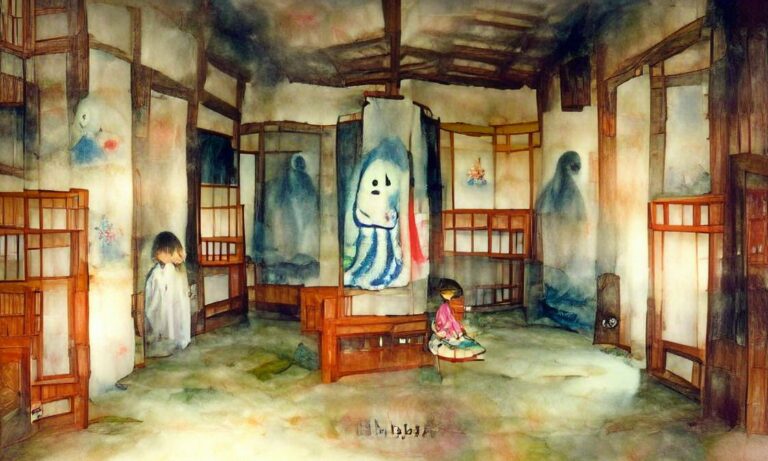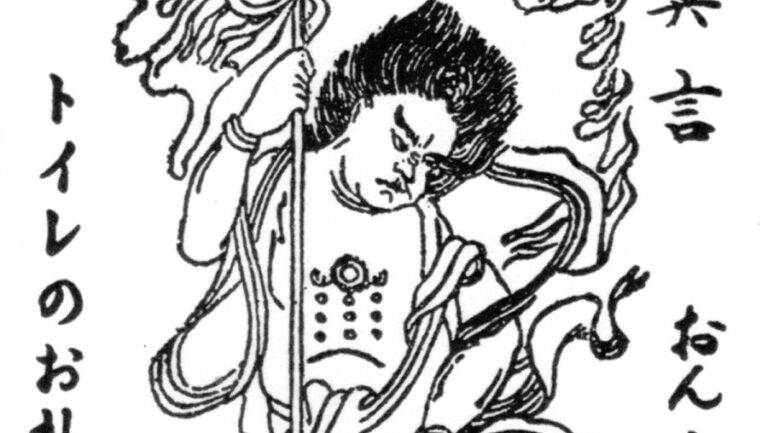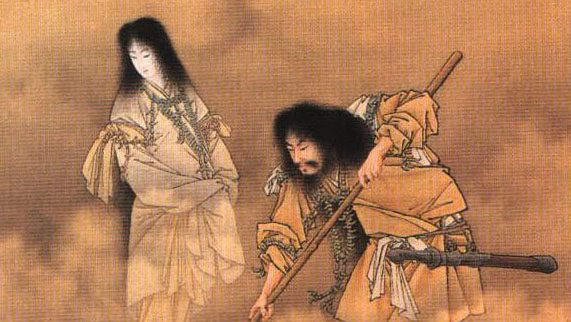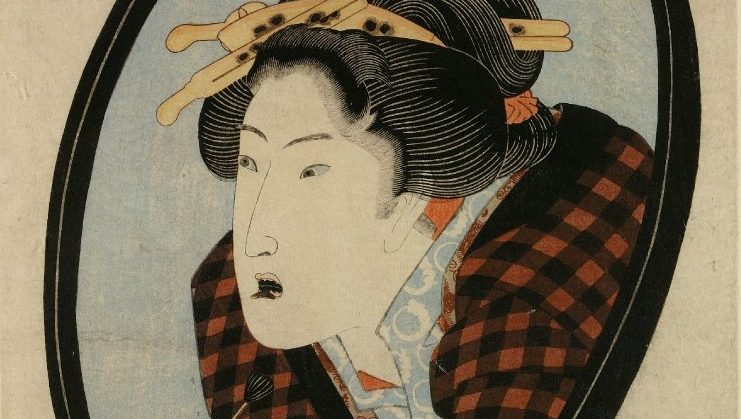Ōkami – The Japanese Wolf – Part 2
Hey hey, this is Thersa Matsuura and you’re listening to Uncanny Japan.
Last episode was Part One of the ōkami, the Japanese wolf. It was all the basics: the two kinds of wolf, Honshu and Hokkaido, what it looked like, what they did, and how it became extinct in 1905. I even talked about a local wolf temple/shrine I visited.
Which, by the way, if you’re a patron and haven’t seen it, I put up a bunch of photos and information over on the Uncanny Japan Patreon site. I have decided that I’m going to do more of those kinds of posts. I’ll visit interesting and obscure temples and shrines, take a bunch of photos, hopefully video, do a bit of research and share it all there. I already have the next trip planned out. It’s to a kitsune shrine, but it’s not Fushimi in Kyoto. It’s different. And I also found a couple really cool Buddha statues near that. So pictures and information about that little day jaunt will go up on Patreon in November.
Today, though, is The Wolf Part 2. Let’s get more into the myth and lore of these beautiful beasts.
Intro:
An Old Saying About Wolves and Bears
Welcome back. Remember in last episode when I said the wolf could be called ōkami or yama inu/mountain dog, or even oinusama, which is the very, very polite way of saying dog?
Let me start today’s episode with an old saying that gives you the idea of the reverence held for these canines. It goes: inuyama damare, kumayama sawage/犬山黙れ、熊山騒げ. When on a wolf mountain be quiet, when on a bear mountain be loud.
Bears, it goes, are for the most part timid and can be startled away by noise. Even today people carry bear bells or jangly things on their walking sticks when hiking in the mountains to alert the animals someone is coming and shoo them off. I think it’s common knowledge the worst thing you can do is come upon a bear and surprise it. So, on a bear mountain, be loud. Kuma yama, sawage. But wolves OWN their mountain. Inuymama, damare. On a dog mountain, shut up. You wouldn’t go onto a wolf mountain making a lot of noise. You’d be respectful and keep it down.
Ōkami Shinko – Wolf Worship
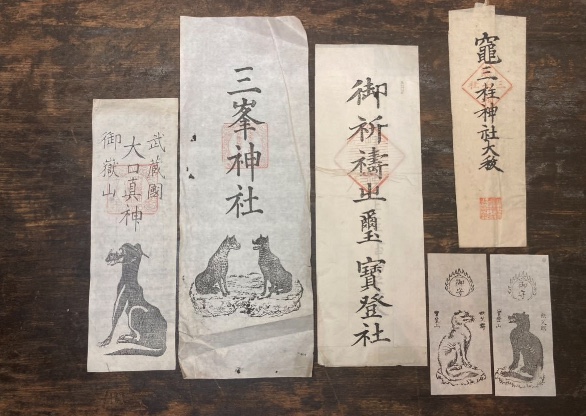
I think one big take away I got from reading about ōkami in Japan is that while in Western lore wolves are big and bad and eat up grannies and dress up like sheep and whatnot, in Japan they were seen as either messengers of the gods or gods themselves. To be feared, for sure. But also to be respected and worshipped. I read a lot about something called Ōkami Shinko which mean Wolf worship.
So even though wolves in Japan have been extinct for over a hundred years, there are still shrines dedicated to them all over Japan, rare though, you kind of have to search for them. I read there was something like only twenty on Honshu, although I’d bet there are more tucked away that haven’t been counted. Anyway, some temple/shrines still remain and at them you’ll find people still visiting and paying respecst to the wolf as protector, guardian, keeping one safe from fires and aiding in both fertility and easy childbirth, to name a few of its attributes.
Two Famous Wolf Shrines – Mitsumine and Mitake
Of all the wolf shrines, there were two that I kept seeing mentioned over and over again and it took forever to figure out how they differed. Both devoted to the wolf and with similar names, sometimes the myth around them was the same, too. Then you have another wolf shrine in Tokyo with the same name as one of those and I was quite confused for awhile, but I think I figured it out. Let’s keep it simple.
One is the Mitsumine Shrine located in Chichibu in Saitama Prefecture. It’s said to have been founded around 2,000 years ago and is associated with Emperor Keiko. And then there is the Mitake Shrine also in Chichibu, Saitama, on Mount Mitake no less. That one is associated with Emperor Sujin and founded before the Mitsumine Shrine. However, there is a Mitake Shrine located in Shibuya that is also dedicated to the wolf. That one was founded in the late 1600s. I don’t know. It’s still a little confusing.
The Wolf Legend of Mitsume Shrine
Let me tell you the myth around the Mitsumine Shrine. The story goes something like this: Prince Yamato Takeru, the legendary unifier of Japan and the son of the12th emperor, was traveling on a military expedition when an evil spirit in the form of a deer appeared along with a thick mist. It then sneakily led Prince Yamato Takeru and his group astray. Before they knew it, the prince and his men were very lost, deep in the mountains. It was bad. The deer then up and vanished and they were really lost. So lost, in fact, that they had to stop moving all together, not knowing which way to go or what to do.
Then, just when all was at its bleakest, along comes a white wolf — a god in disguise — to guide them out of the mountains. Yamato Takeru was so grateful and moved by this divine animal that he told it to remain there, fight off evil, and become the Ōguchi no Makami/ 大口の真神/The True God with the Big Mouth.
Ancient Fortune Telling Practice – Futomani
As for the Mitake Shrine, also called Musashi Mitake, the one located in the mountains of Chichibu Tamakai National Park, not Shibuya. Here is one of the few places that still practice, once a year, an ancient form of divination called futomani/太占. This a Shinto practice thought to predate even tortoise shell divination which came from China. Futomani most likely started back in the Jomon Era, think 5,000~500 BCE. So long ago. Futomani is performed by heating the shoulder blade bone of a stag — take that deer — and interpreting the cracks that appear.
People also visit this shrine if they are possessed by some evil and need to be exorcised. Which totally jives with my friend’s story of his daughter and asking the wolf to help. Different shrine, same wolf deity.
Inu Okuri – The Escorting Dog
Now let’s talk about Okuri-inu/送り犬 literally ‘sending or escorting dog’. It was a kind of youkai that frequented tales from the Tohoku region all the way down to Kyushu. It was sometimes a dog, but sometimes a wolf. Remember how those terms become interchangeable at times.
What does this mysterious okuri-inu do? Basically it watches over travelers in the mountains, sometimes it protects or guides them. Sometimes, if you are just too exhausted to go on and collapse, it will eat you right up. If you’re tired from your journeys and just sit down to rest, though, like you don’t completely give up, it will leave you alone. I don’t know a lot about wolves, but wouldn’t that be just a hungry wolf’s nature?
So I imagine old fashioned folk hiking through mountain paths late at night on their way home and they look up to see a wolf watching, silently following. They continued on with the ōkami always close by, but not attacking, just observing. And I guess once these travelers made it home safe and sound, they remembered the wolf and imagined that it was making sure they made it home okay. They were escorting them home. Not that the wolf was secretly waiting for the traveler to slip and hit his head on a rock, so they might have a late night meal.
Anyway, it’s said that if you make it to your destination, then you should turn to say goodbye or thank you the ōkami for guiding you back home safely. It’ll then turn and disappear back into the forest. Another belief says you should first wash your feet, then give thanks for the safe journey home, then offer the okuri-inu some kind of gift, food or a single tabi sandal, only after that will it leave. Again, knowing dogs the way I do, offering it an old shoe begs the image of a regal wolf bringing it back to its den to present to its pups to play with. I made that up. I have no idea why one straw sandal was offered to the wolf.
Showa Era Story from Koyama Masao
There was an author named Koyama Masao who wrote a collection of folk stories that was published during the Showa Era and in it there are tales of the escorting dog.
One of his stories was about a very pregnant woman who was returning to her parents’ home (as is custom, even now) to give birth to her child and get some help and care from her mother. Unfortunately, on the way home while in the hills she went into labor. Night fell and she delivered the baby there on a mountain path. Afterward, many wolves gathered around.
The distraught woman cried out, “If you’re going to eat us, then just eat us!” But instead they spent the night protecting the mother and child from other bad things that lived in the forest. She was able to make it to her parents’ house.
Later, after hearing this story, her husband went to thank the okuri inu and give them sekihan a kind of red beans and mochi rice, which is usually served only on auspicious occasions.
There are quite a few okuri ōkami legends that are basically the same, Wolves that will gobble you up if you collapse in the mountains, but if you are kind and respectful they’ll watch out for you.
Mukae Inu – The Dog that Comes to Get You
Some folk beliefs say that while Okuri inu protect people, but there are also mukae inu 迎え犬. This was translated as “welcoming dog” but mukae has the meaning of going and meeting or getting someone. So the mukaei inu are the bad ones that will attack you.
Escorting Weasels and Sparrows
An aside, there is also something called an okuri itachi, an escorting weasel. Who it’s said is a friend of the okuri inu. And then there’s the okuri suzume, a sending off or escorting sparrow. This little one follows you and chirps to make sure you are safe. I didn’t read anything about it ripping you limb from limb if you happened to collapse on your way home. Although, it is rumored that this tiny bird is actually a wolf in disguise.
The Hiding, Not Disguising, Wolf
Speaking of disguise, if you think about it, Japanese foxes, kitsune, and tanuki are always transforming into one thing or person or another to trick humans. But except for that bit about the sparrow, wolves remain true to themselves. They show you exactly who they are. They can and do hide, but not because they want to trick you. It’s just because they don’t want to be seen.
Kunio Yanagita famously wrote that a wolf can hide even where there is only a single reed.
Raised by a Wolf
Some other wolf tales: There is one about wolves raising a baby that had been left in forest. Later that baby grew up to become the leader Fujiwara no Hidehara.
Warning from a Wolf
Wolves are said to have howled before a flood in 1889, thus warning the villagers in the Tamaki Mountains of the danger. They even got a tree named after them for this act of kindness. It’s called The Cypress of the Dog Howls.
Another story is sometimes if a family member did not return from a journey, a wolf would appear at your door and howl sadly letting you know that they had died.
Still Looking for the Extinct Wolf
A couple more wolf things before I let you go. One is that there are still people out there hoping against hope that wolves haven’t gone extinct and are just deep in the mountains staying away from us pesky humans. A man named Hiroshi Yagi has spent literal decades devoted to this cause. He’s reportedly seen and heard the yamainu or ōkami, even taken a photo of one in 1996, although some dispute whether or not its a wild dog or a real wolf. He has a blog that he updates nearly daily with results from his trail cams as well as information other wolf enthusiasts send him from all over Japan, recordings of howls, descriptions of possible sightings and photos of scat. Hiroshi Yagi is in his seventies now. Wouldn’t it be wonderful if his dream would come true and he’d find real evidence that the wolf was still alive.
Seppuku Pistols – A Wolf Edo Era Punk Band
Another wonderful find I found while researching was a Japanese band called the Seppuku Pistols. Their logo is an image of the wolf and they say of themselves, they are the last survivors of the Japanese wolf. They are so cool, think a mix of punk, with traditional Japanese taiko, shamisen, and shakuhachi thrown in. I think some call it, post-electricity punk or Edo Era punk, but that’s not how they define themselves.
I’m crazy about them, but got a little nationalistic vibe, which made me a little nervous. But I’ve since read they say they aren’t nationalistic, but instead just want us all to get along by merging left and right and destroy all the flags. They really are thrilling and fun, if you want to check them out. Sometimes they howl before songs.
Okay, I’ll stop for now. Thank you so much for listening and supporting the show. I’ll talk to you again real soon.

